
NORDIC
COOKBOOK
Dear Reader,
In my youth, I spent a lot of time with my grandparents, who, although native Minnesotans, ultimately settled in South Carolina (theirs was probably the only home in the state where a curling stone decorated the den and Scandinavian plates graced the walls). Still, they clung to the Nordic culinary traditions they had grown up with. We always had wild game, fish, and the freshest of local vegetables. (Eat your rabbit food! Grandpa would insist. Id rather pay grocery bills than doctor bills.) And we always, no exceptions, sat down around the formal dining table to enjoy our meals together.
After spending my twenties in southern California (learning to cook Chinese, Indian, and Mexican food like a pro), I landed in the Pacific Northwesta place my grandparents wouldve loved, with its still-vibrant Scandinavian-American population, its cold waters, its bountiful forests. It was coming full circle it was coming home. The availability of fresh-caught wild salmon, cold-climate root vegetables, and an abundant variety of berries inspired me to return to preparing our meals as my grandparents had: with a focus on freshness, seasonality, and simplicity.
Im thrilled to be able to share their Nordic legacy with you. Vr s god! Smaklig mltid!

Welcome to the  Series!
Series!
These handy, accessible books give you all you need to tackle a difficult project, gain a new hobby, comprehend a fascinating topic, prepare for an exam, or even brush up on something you learned back in school but have since forgotten.
You can choose to read an Everything book from cover to cover or just pick out the information you want from our four useful boxes: e-questions, e-facts, e-alerts, and e-ssentials. We give you everything you need to know on the subject, but throw in a lot of fun stuff along the way, too.
We now have more than 400 Everything books in print, spanning such wide-ranging categories as weddings, pregnancy, cooking, music instruction, foreign language, crafts, pets, New Age, and so much more. When youre done reading them all, you can finally say you know Everything!

PUBLISHER Karen Cooper
MANAGING EDITOR, EVERYTHING SERIES Lisa Laing
COPY CHIEF Casey Ebert
ASSISTANT PRODUCTION EDITOR Melanie Cordova
ACQUISITIONS EDITOR Lisa Laing
ASSOCIATE DEVELOPMENT EDITOR Hillary Thompson
EDITORIAL ASSISTANT Matthew Kane
EVERYTHING SERIES COVER DESIGNER Erin Alexander
LAYOUT DESIGNERS Erin Dawson, Michelle Roy Kelly, Elisabeth Lariviere, Denise Wallace
Visit the entire Everything series at www.everything.com

NORDIC
COOKBOOK
Kari Schoening Diehl

This book is dedicated to my parents, Kari Lenning Schoening and Kenneth Stengel Schoening. Thanks for making me your own and for sharing your lives, your love, and your legacy with me.
Contents
Appendix A:
Nordic Cookbooks, Culinary Websites, and Blogs
Appendix B:
Storefront and Online Nordic Food Suppliers
Acknowledgments
Family should always come first, and so it is with heartfelt love and gratitude that I thank my best friend and husband, Peter Diehl, and our children, Eric, Anna, and David, for their willingness to play second fiddle while I finished this book. Thanks for taking over the marketing, cooking, and cleaning during the final writing stages, guys! Ill take my apron back now, please, free to prepare all of Erics Top 10 Nordic Thingsbesides meThat Moms Ever Made.
Many thanks also to my parents, Kari and Kenneth Schoening, to my sister Krista Fox, to Magga Harardottir, and to Margrit Meinel Diehl for your love, encouragement, cooking advice, and editing support. Barbara Rolek, Ellen Hinds, Hank Shaw, and the late Kevin Weeksthanks for sharing your professional expertise with me and for talking me through the rough spots. Lynn and Cheyanne Bennett, you rock. So do Shellie Stevens, Susan Amanda Eurich, Laurent Martel, the sisters of Nellie Gerdrum Lodge #41 of the Daughters of Norway, the About.com food guides, and Diehls and Horners all. Ditto to my novelist/writers group friends Janet Oakley, Sherry Brummel, Heidi Thomas, and also to Deborah Hale (for sending me the Swedish editions of her great stories). Finally, thanks to the wisest and most generous writing manager ever, Jason Reece, for giving me extended leaves of absence so that I could pursue this dream of publication. Im truly blessed in my family, friends, and associates.
Introduction
SCANDINAVIA, WITH ITS HARSHLY beautiful mountains, deep fjords, isolated islands, thermal hot springs, and, perhaps most of all, the ageless sea that surrounds, feeds, and even today defines its people, has not always been viewed as the most likely candidate to produce a world-class cuisine. Until very recently, if asked to describe typical Scandinavian or Nordic food, many peopleno doubt thinking of all of that polar snow and icewould think, Well, its very fishy and white, isnt it? White cod. White fish pudding. Bergen white fish soup with white dumplings. White cheeses. White potato soups and lefse (soft Norwegian potato flatbread). White horseradish. White Icelandic skyr (yogurt). White sauce on white lutefisk. Nordic cuisineat least as it has been stereotypedwould hardly seem a contender if forced to compete with the vibrant colors and flavors of the foods of warmer regions like Italy, southern France, and Spain.
Fortunately, a cohort of Scandinavias finest chefs and food journalists, led by Claus Meyer and Ren Redzepi (founders of Copenhagens Noma, twice selected as the Best Restaurant in the World in Restaurant Magazines San Pellegrino awards), have spearheaded what amounts to a culinary revolution: the New Nordic Cuisine Movement. Utterly dispelling the stereotype, these chefs demonstrate how the foods native to Denmark, Norway, Sweden, Iceland, and Finland are just as healthy, delicious, and even as colorful as those of Mediterranean climes. Even more important, they emphasize many of the same principles that other advocates of rising culinary and dietary movements have stressed: that our modern generation, threatened by unprecedented levels of obesity, cardiovascular disease, and diabetes, needs to return to the saner methods of food acquisition, preparation, and consumption that our grandparents or great-grandparents practiced.
Thats inspiring news for many Americans and Canadians, many of whom live in snowy climates similar to Scandinavias, and who, given the increasingly publicized cases of food contamination that have resulted from the countrys widespread distribution system, are beginning to worry about the safety of foods gathered, processed, and transported by and from unknown sources. As the current generation is beginning to realize, at long last, physical health and emotional welfare can be significantly enhanced when you take an active role in procuring local ingredients in season, cook and prepare your meals from scratch, and take the time to sit down and enjoy them with your favorite people.

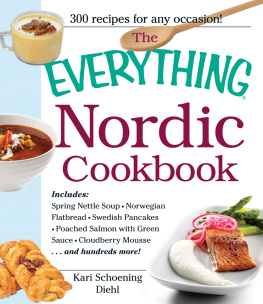

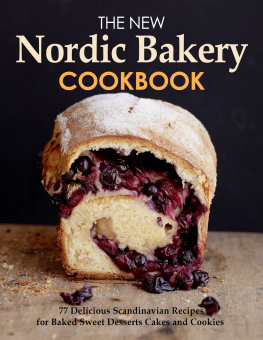
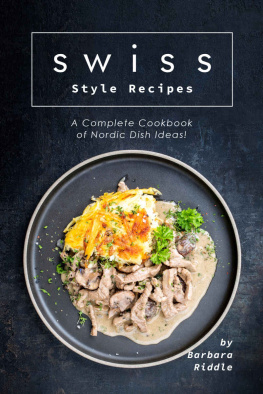
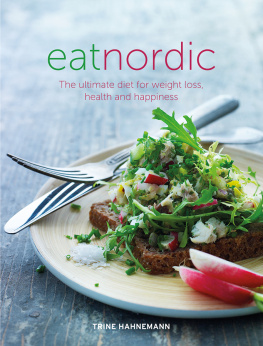
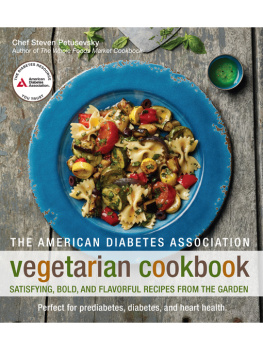
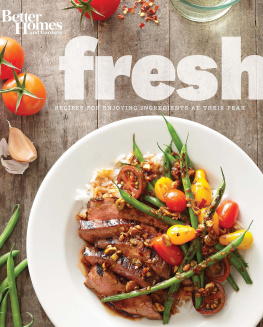



 Series!
Series!

